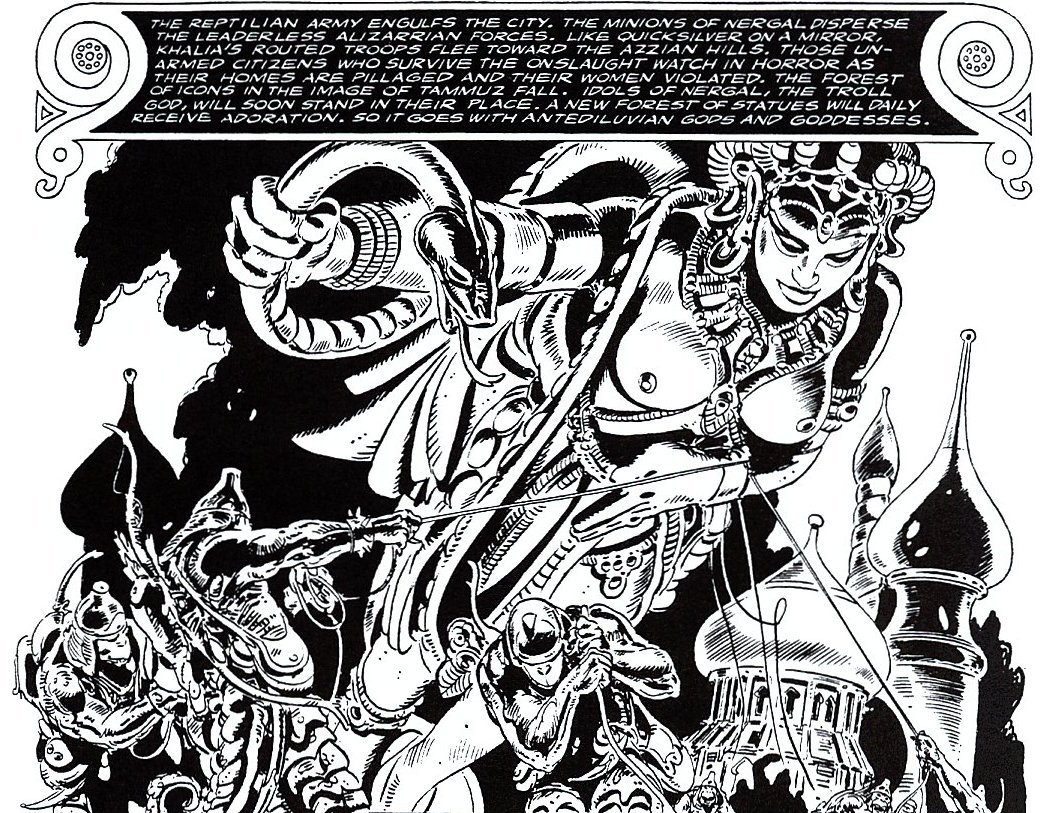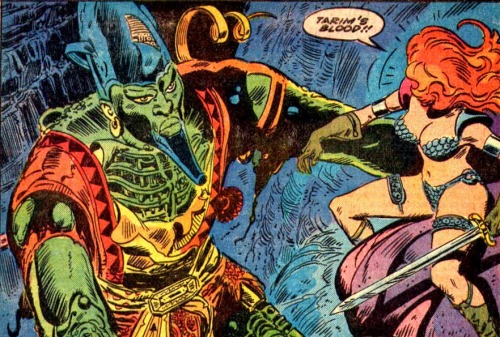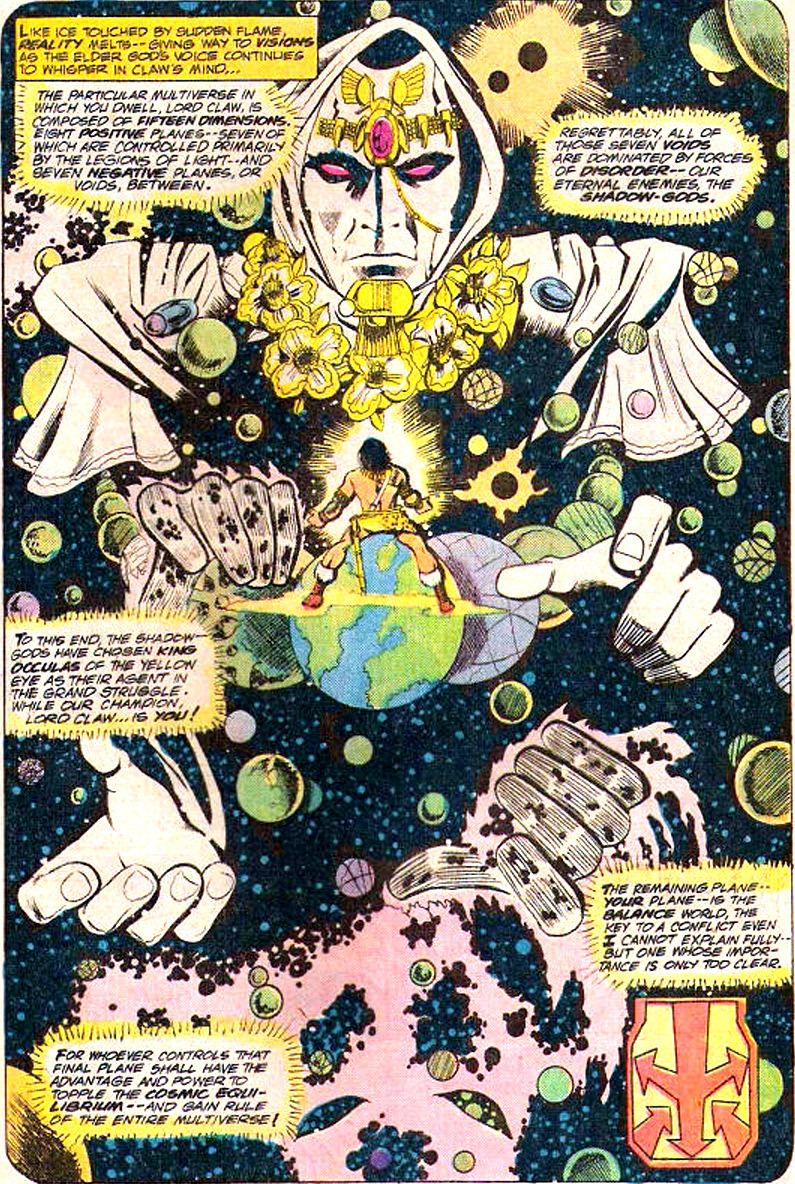 |
| Art by Jack Kirby |
While I have always been more enthusiastic about the standard (A)D&D Cosmology compared to a lot of people, one thing has always bothered me about it: the shoehorning in of the various mythological figures from Deities & Demigods into the canonical version of a planes. Perhaps they were meant to merely placeholders for something you created, but I don't think they are ever discussed as such. The every god and the kitchen sink approach loses the flavor of the various mythologies, and undermines the unique (at least weirdly syncretic) flavor of the Great Wheel. I think they can for something new and much weirder.
But there's something else wrong. Geoffrey Grabowski (lead designer of Exalted 1e among other things) hits on it:
There are infinite infinite prime material planes. Well wow. Against that, even greater gods look tiny. Even if you give them plenty o' powers like Grubb's cosmogony does, or like the immortals rules that appear in some versions of the game do, they're still essentially the pantheon from Lord of Light. They might have a lot of superpowers from tapping into whatever god-power comes from -- possibly belief-energy? -- but they don't command their context. They're finite beings pretending to universal domain against a backdrop that makes their charade a joke if you have any distance on the tableau.
Nowhere in the canon planar materials do we get the feeling that these gods created the planes. Maybe they created one of an infinite number of Primes, but they are not the creators of the Outer Multiverse. They are its inhabitants. At best inheritors, at worst squatters.
It seems to me that what the D&D Planes need is either (a) new gods that are vast and strange, so that they seem reasonable creators of the vast, baroque, orrery in which they reside, (b) more Kirby New Gods/Thor-esque super-powered adventurers (i.e. the next level of the game. Immortals done right.), or (c) both.

















